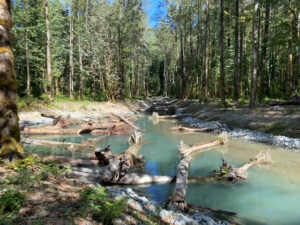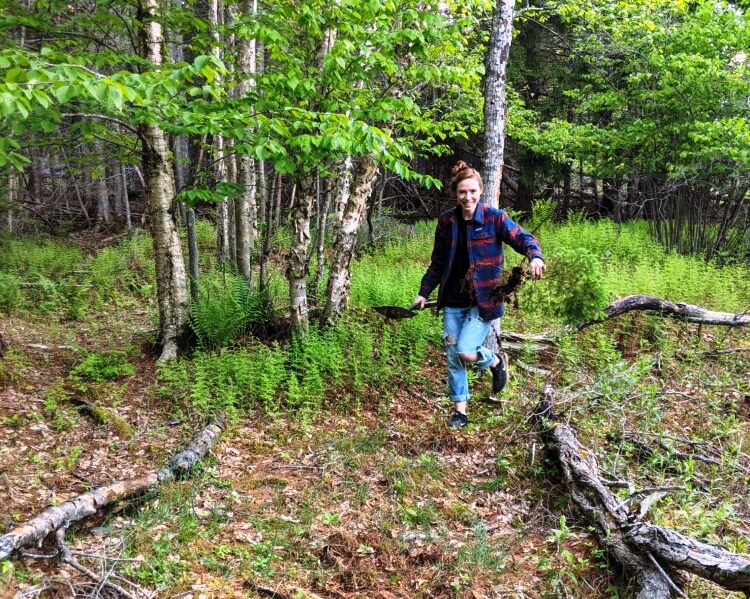As part of its 10-year strategic plan to Regenerate Canada, WWF-Canada has the goal of restoring 1 million hectares (2.5 million acres) of lost, complex ecosystems that act as essential wildlife habitat and sequester carbon in nature. And we aim to do this by 2030.
But what exactly is restoration? Why does it matter? And how will they reach this seemingly enormous number?
They spoke to Jessica Currie, WWF-Canada’s senior specialist of nature-based climate solutions, who recently led a restoration analysis of Canada, to find out more:
What is restoration?
Ecosystem restoration is the process of supporting the recovery of ecosystems that have been converted or degraded because of human activities — things such as roads, agricultural lands or energy infrastructure.
It’s essentially a way to recover habitat for wildlife, which may also result in higher carbon sequestration and storage benefits in restored ecosystems.
What’s the difference between a degraded and converted ecosystem?
A converted ecosystem has been converted from a natural one — say, a forest or wetland — into a human-dominated one, like cropland or urban areas.
A degraded ecosystem, on the other hand, isn’t as healthy as a natural one and doesn’t support as much biodiversity or carbon storage because of human activity — pollution, invasive species, cutting down trees — but is still categorized as a forest, wetland or grassland.
What kinds of landscapes need to be restored?
We can and should restore both converted and degraded landscapes.
Restoration of converted lands may result in higher benefits for biodiversity and climate, whereas restoration of degraded lands is likely more feasible since it’s easier to work in landscapes without human infrastructure.
That said, we currently have more data on which ecosystems are converted versus those that are degraded.
What are the benefits of restoration?
Restoration can help to create or expand areas where wildlife live, breed and mate.
This is especially important for Canada, where over 800 different animal and plant species are at risk of extinction. Healthy habitats can also sequester carbon from the atmosphere and store it in plants and soils, helping to fight climate change.
But while biodiversity and climate are important, there are other elements we need to consider, too. Any restoration plans have to take into consideration the knowledge and priorities of Indigenous Peoples and local communities so that there’s benefit for them as well.
How do you decide what to restore and what to protect?
As a conservation organization, WWF-Canada does both.
Where the environment is more intact, like the north of the country, it makes more sense to protect these lands and seascapes to prevent them from being converted or degraded in the first place.
But in areas where humans have had high impact, we can prioritize the lands that make most sense for restoration.
Essentially, protection is the first strategy, and restoration complements it so we can recover what we’ve already lost.
Is WWF-Canada working on any restoration projects?

Newly created Sθqəy channel in the Upper Pitt River watershed near Corbold creek. © Joshua Ostroff / WWF-Canada.
WWF-Canada is working on restoration projects all across the country, including tree planting, invasive species removal and local actions such as planting native gardens.
Some of our restoration projects are funded through our Nature and Climate Grant Program, which helps local groups and Indigenous communities restore degraded lands and shorelines to improve habitats and capture carbon.
For example, one of our grantees, ALUS Canada, works collaboratively with farmers and community partners to create, enhance, conserve and manage on-the-ground habitat projects.
Their projects aim to integrate native habitats such as grasslands, trees and wetlands into marginal and environmentally sensitive areas of farmland in southern Ontario and Quebec.
In British Columbia, we’re supporting Katzie First Nation’s multi-year efforts to restore the Upper Pitt watershed as well as the Secwepemcul’ecw Restoration and Stewardship Society’s response to the 192,000-hectare Elephant Hill wildfire, including planting nearly a million trees over the next three years.
Featured photo shows Jessica Currie, Senior Specialist Nature-based Climate Solutions at WWF-Canada walking through a forest. © WWF-Canada.

